
Fundamentals
The Cuticle Layer, in its fundamental essence, represents the hair strand’s outermost protective shield, a delicate yet resilient structure shielding the inner core. Imagine it as a series of translucent, overlapping shingles, much like the tiles on a rooftop, each cell laying meticulously over the next. These cells, typically 8-10 layers deep in human hair, are composed of tough keratin proteins, providing the hair shaft with its initial defense against external forces and environmental aggressors.
For textured hair, this layer holds particular significance. The very architecture of coiled, kinky, and curly strands means these cuticle scales often lift more readily than on straighter hair, a natural inclination of their design. This slight elevation, a characteristic of many textured hair types, impacts how moisture enters and exits the hair fiber.
The health of this outermost sheath deeply affects the hair’s feel, its hydration, its sheen, and its ability to withstand the manipulations of daily life. Understanding this primary purpose, this ancestral function, is the first step towards a more profound connection with our hair’s journey.
The outermost surface of the cuticle possesses a hydrophobic, or water-repelling, nature. This characteristic allows it to readily bind with oils and other water-hating substances, a feature ancestral practices have intuitively recognized for centuries. Traditional care rituals, steeped in deep respect for natural elements, often involved emollients that sealed and smoothed this layer, a testament to an ancient wisdom that mirrored scientific truths now being uncovered.

The Protective Shield
A primary definition of the Cuticle Layer centers on its function as a guardian. It is the hair’s first line of defense, a robust barrier preventing damage to the vulnerable inner cortex, the hair’s primary structural component. Without a well-preserved cuticle, hair would succumb swiftly to the rigors of styling, environmental exposure, and even simple touch. This protective role underscores why so many ancestral hair practices across Black and mixed-race communities focused on preserving this external layer.
- Physical Protection ❉ The overlapping cells provide a physical barrier against abrasion from combing, brushing, and styling, minimizing mechanical stress on the hair shaft.
- Environmental Defense ❉ It shields the inner hair from elements such as harsh sunlight, wind, and pollutants that could otherwise compromise its structural integrity.
- Moisture Regulation ❉ By controlling the passage of water into and out of the hair fiber, the cuticle helps maintain optimal hydration, a crucial element for the resilience of textured hair.

A Gentle Introduction to Porosity
The concept of hair porosity relates directly to the state of the cuticle layer. Porosity describes how easily water and other substances can enter or exit the hair shaft. When cuticle scales lie flat and close together, the hair exhibits low porosity, meaning it resists moisture absorption but retains it well once hydrated. When the scales are more raised or damaged, the hair has high porosity, absorbing moisture quickly but losing it with equal speed.
Understanding this simple relationship between the cuticle and moisture absorption informs countless traditional hair care practices, particularly those aimed at sealing the hair. Ancestral knowledge, passed down through generations, often focused on nurturing the hair’s ability to hold onto precious moisture, recognizing its impact on hair vitality.
The Cuticle Layer is the hair’s essential exterior, a transparent, overlapping shield that guards the internal structure and dictates the strand’s relationship with moisture, a foundational aspect of hair health across all textures.
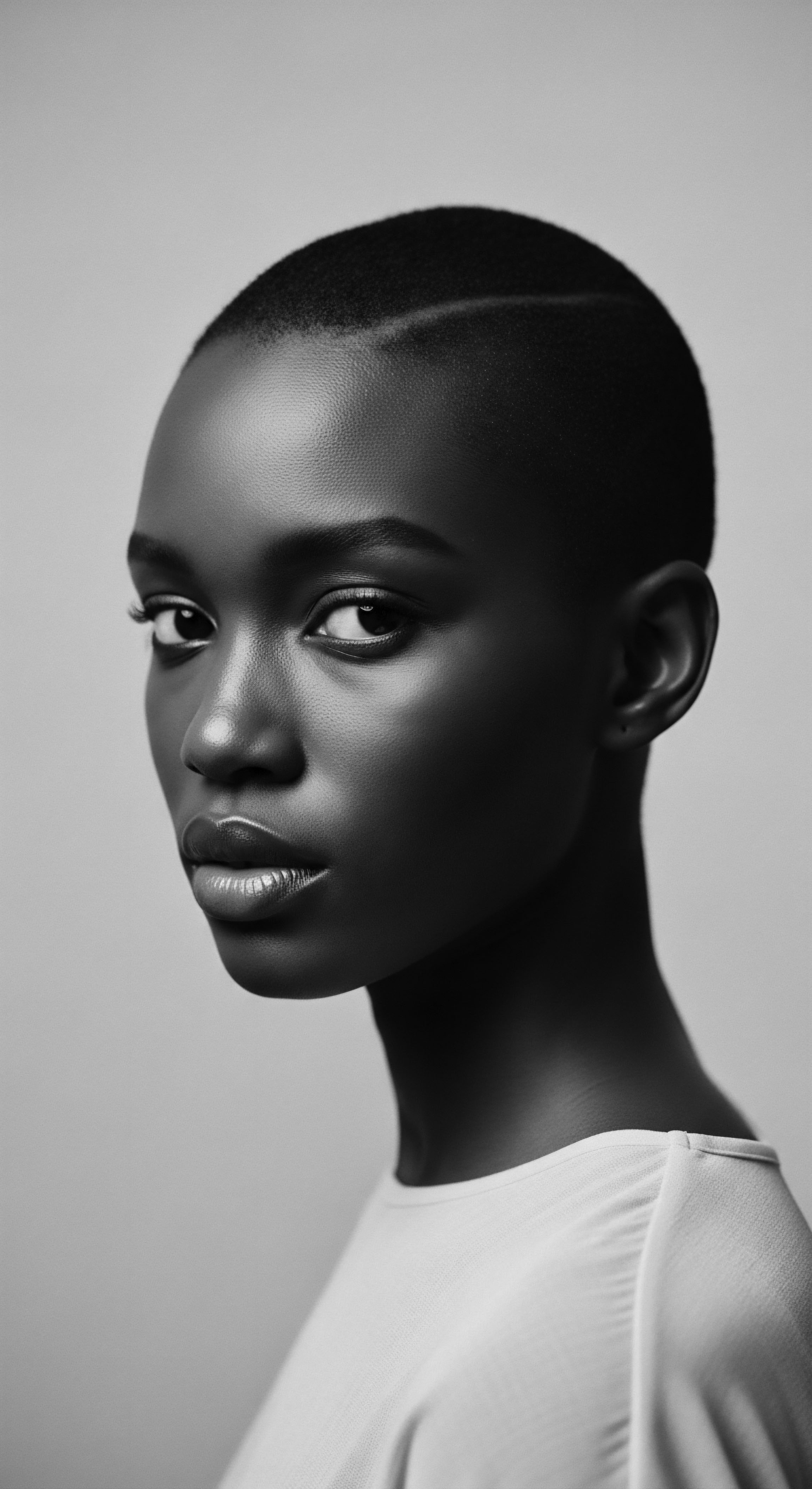
Intermediate
Moving beyond its most basic delineation, the Cuticle Layer assumes a more intricate meaning, particularly for individuals navigating the complexities of textured hair. This external sheath, comprised of flattened cells (often referred to as scale cells) arranged in a precise, imbricated pattern, serves as the primary determinant of a strand’s surface characteristics. Its condition influences not only the hair’s visual appeal, like its shine and smoothness, but also its tactile qualities and its susceptibility to damage. The individual cells making up the cuticle, typically 0.5 µm thick and roughly 45–60 µm long, are secured by disulfide bonds, offering collective strength.
For hair that coils, kinks, or curls, the arrangement and integrity of these cuticle cells become paramount. The natural bends and turns within textured strands introduce areas where the cuticle may be inherently more exposed or prone to lifting. This unique morphology affects how light reflects off the hair, often contributing to less natural shine compared to straight hair, as well as influencing how products adhere and perform. This nuanced understanding speaks to a long lineage of care traditions, where communities intuitively adapted their methods to support the hair’s inherent architecture.

Architectures of Resilience
The helical, spiraling, or zigzag forms of textured hair distinguish it significantly from straight hair, a difference rooted in the hair follicle’s curved shape. This curvature means the cuticle layers do not always lay as uniformly flat along the entire length of the strand, creating points of vulnerability. Scientific inquiry has revealed that textured hair can exhibit fewer cuticle layers on its major axis compared to its minor axis, potentially contributing to its greater susceptibility to breakage. Despite these differences in morphology, the underlying protein composition of the hair cuticle, primarily keratin, remains consistent across ancestries.
Acknowledging these structural realities allows us to appreciate the ingenuity of ancestral practices, which often centered on reinforcing the cuticle’s integrity and minimizing challenges specific to coiled hair. These time-honored methods offer valuable lessons for modern hair care.
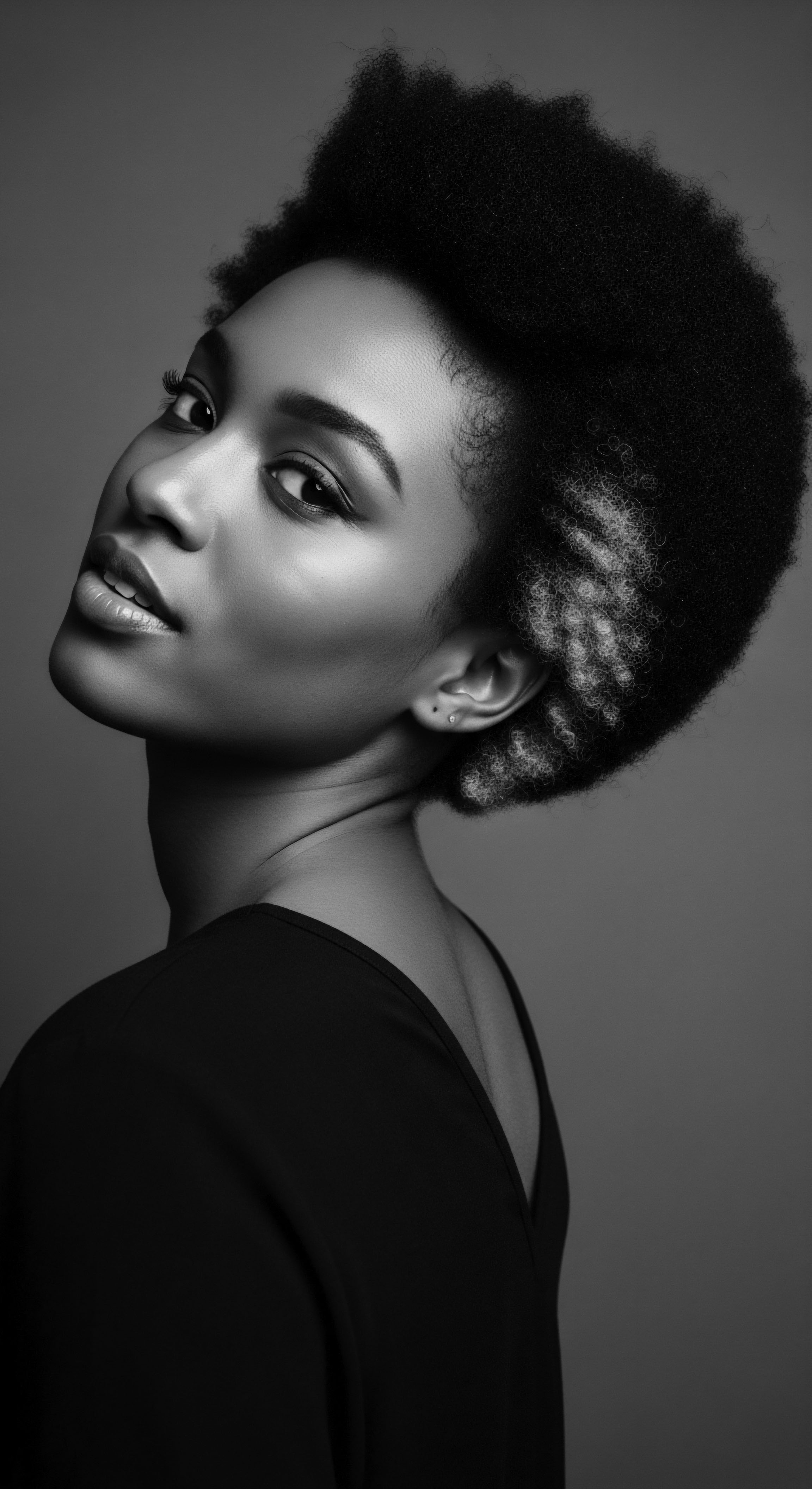
Echoes in Moisture’s Dance
The Cuticle Layer plays a central role in hair’s moisture balance. Its hydrophobic surface means it attracts and binds to oils, which is a key mechanism in traditional practices aimed at sealing moisture into the hair. When the cuticle is healthy and intact, it effectively minimizes water loss through evaporation, allowing the inner cortex to remain hydrated.
Conversely, a raised or compromised cuticle can lead to rapid moisture escape, resulting in dryness, frizz, and increased vulnerability to breakage. This understanding of moisture retention is a cornerstone of textured hair care, both historically and in contemporary contexts.
Many historical hair practices involved the consistent application of natural emollients and techniques that physically smoothed the cuticle. These actions, while not articulated in molecular terms, intuitively created a healthier environment for the hair fiber, fostering its resilience and vitality.
The Cuticle Layer’s precise arrangement governs the textured hair strand’s strength, hydration, and visual appeal, a deep connection understood through generations of ancestral care traditions that honored the unique needs of coiled hair.

Ancient Hands, Modern Insights ❉ A Comparative View
Generational wisdom often developed methods to care for hair, sometimes unknowingly targeting the cuticle layer’s needs. From the rich shea butters of West Africa to the precise braiding techniques of the Caribbean, communities preserved hair health through practical observation and inherited knowledge.
| Aspect Sealing Moisture |
| Traditional Practice (Pre-20th Century) Application of natural oils (e.g. palm oil, shea butter) and plant extracts, often smoothed onto hair in sections. |
| Contemporary Understanding/Practice Use of leave-in conditioners and hair oils to create a protective barrier, reducing transepidermal water loss. |
| Aspect Reducing Friction |
| Traditional Practice (Pre-20th Century) Protective styling (braids, cornrows, twists) and head wraps for sleep or daily activity. |
| Contemporary Understanding/Practice Satin bonnets, pillowcases, and low-manipulation styling to minimize mechanical damage and cuticle lift. |
| Aspect Gentle Cleansing |
| Traditional Practice (Pre-20th Century) Herbal rinses or clay washes that cleansed without stripping the hair’s natural oils. |
| Contemporary Understanding/Practice Sulfate-free shampoos and co-washing methods designed to preserve hair's natural moisture balance. |
| Aspect Enhancing Shine |
| Traditional Practice (Pre-20th Century) Polishing hair with natural butters or oils; gentle brushing or combing to align scales. |
| Contemporary Understanding/Practice Use of shine serums or humectant-rich conditioners that smooth the cuticle for light reflection. |
| Aspect These parallels reveal a continuous human striving to support hair's natural integrity, drawing from deep heritage and advancing scientific inquiry. |
The continuity between historical and modern approaches highlights a persistent dedication to maintaining hair’s vitality. This dedication, spanning generations, affirms the profound significance of the cuticle layer in textured hair heritage.

Academic
The Cuticle Layer, at an academic level of delineation, represents the outermost stratified stratum of the hair shaft, a complex biological architecture composed of multiple overlapping, flattened, non-living cells. These cells, known as cuticle cells or cuticular scales, are arranged in an imbricated pattern, oriented with their free ends directed towards the hair’s distal tip, resembling the precise layering of fish scales or roof tiles. This arrangement forms a durable, albeit sometimes vulnerable, protective barrier, critically safeguarding the hair’s inner structures ❉ the cortex and, when present, the medulla. The integrity of this superficial mantle is paramount to the hair fiber’s biomechanical properties, its surface chemistry, and its aesthetic characteristics.
Chemically, the cuticle is largely composed of highly cross-linked keratin proteins, specifically alpha-keratins, which provide its remarkable toughness and inelasticity. Beyond the proteinaceous matrix, the cuticle’s surface is endowed with a lipid layer, integral to its hydrophobic nature. This layer includes components like anteiso-18-methyleicosanoic acid (18-MEA), which is covalently bound to the outer epicuticle.
This surface lipid content plays a pivotal role in maintaining the hair’s hydrophobicity, minimizing water absorption, and contributing to its lustrous appearance. Disturbances to this delicate lipid envelope or the physical disruption of the keratin scales can lead to increased porosity, reduced shine, heightened friction, and heightened susceptibility to mechanical and chemical damage.
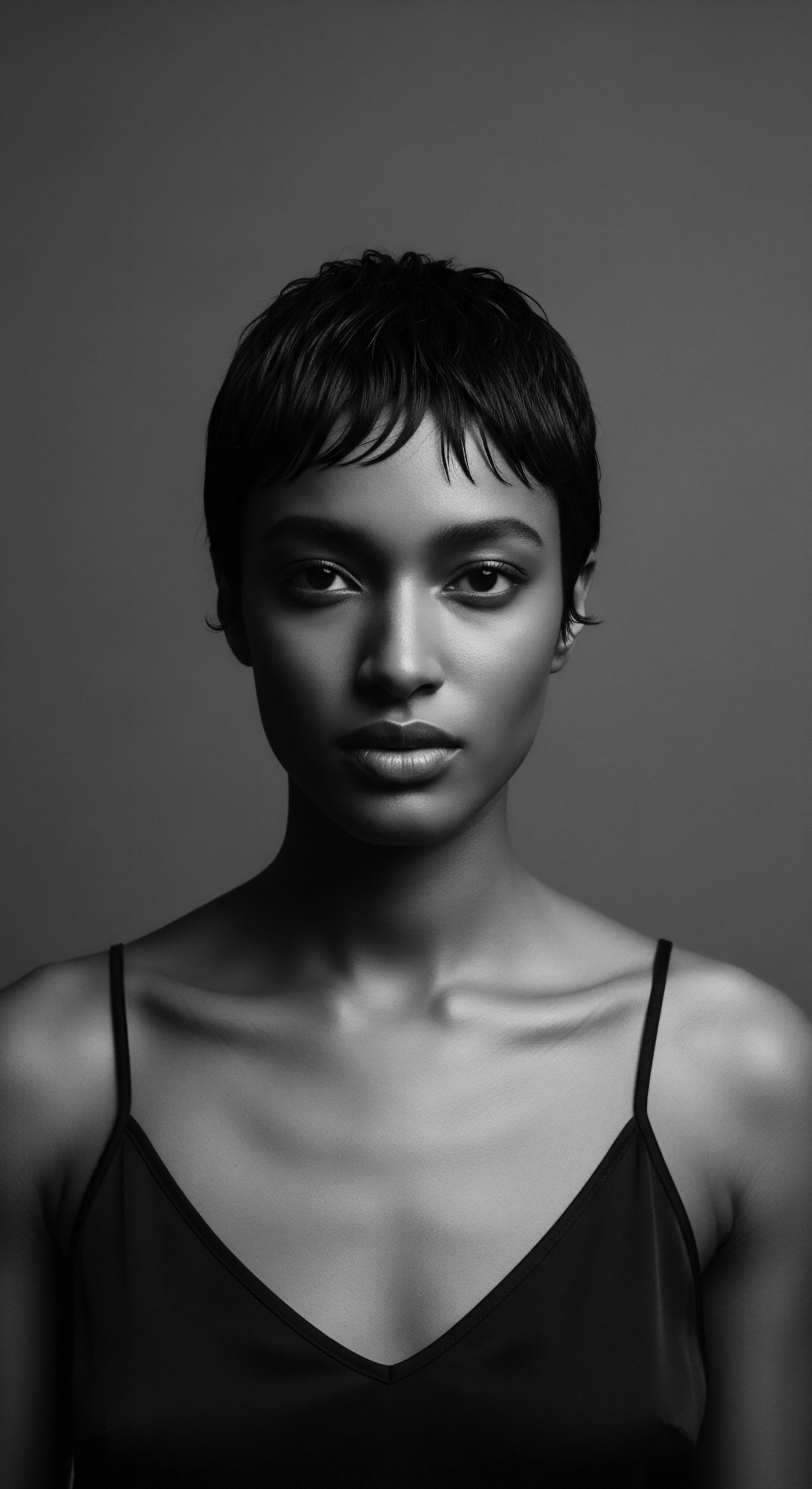
The Micro-Architecture of Ancestry
The morphology of hair, particularly its cross-sectional shape and curl pattern, varies significantly across ancestral groups. Afro-textured hair, characterized by its elliptical or flattened cross-section and often tight, helical, or zigzag curl patterns, presents unique considerations for cuticle integrity. The inherent twists and turns within these hair strands create points of stress and localized tension, which can predispose the cuticle layers to lift or fracture more readily than in straighter hair types.
While some research indicates that African hair may have fewer cuticular layers along its major axis, potentially increasing susceptibility to cortical damage, other studies find no significant difference in overall cuticle thickness or shape compared to Caucasian or Asian hair. This complexity in understanding cuticle architecture across diverse hair types underscores the deep biological variations present within human hair, compelling a nuanced approach to care that honors these inherited structural differences.
The variations in lipid distribution across ethnic hair types also carry academic significance. Studies indicate that African hair possesses a higher overall lipid content, particularly in its internal structures, including the cuticle, compared to Asian and Caucasian hair. This higher lipid concentration, while contributing to certain properties, can also be associated with increased lipid disorder, influencing moisture regulation and the hair’s barrier function. This intricate interplay of structural and chemical components informs our comprehensive understanding of the Cuticle Layer’s meaning in the context of textured hair.
The academic definition of the Cuticle Layer encompasses its complex protein-lipid composition and layered cellular arrangement, recognizing how these elements collectively dictate the unique biomechanical and chemical properties of diverse hair textures, particularly within African and mixed-race ancestries.
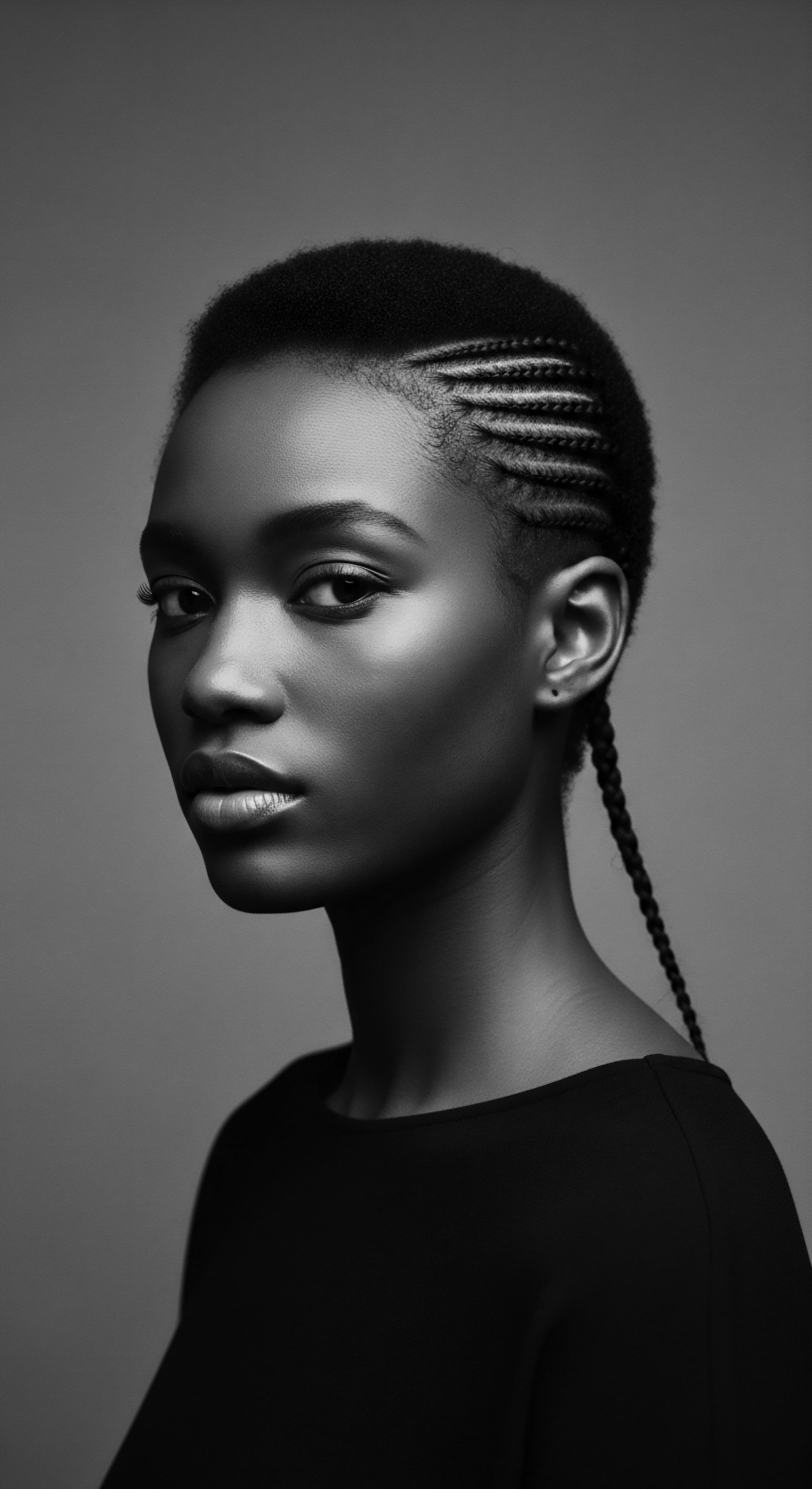
Biochemical Interplay and Inherited Wisdom
The Cuticle Layer’s role extends beyond mere physical protection; it is a dynamic interface mediating the hair’s interaction with its environment and with the substances applied to it. The outermost epicuticle, a thin membrane, influences the hair’s surface charge and its affinity for various cosmetic ingredients. Alterations to the cuticle’s pH, induced by harsh chemical treatments such as relaxers or dyes, can cause the scales to swell and lift, compromising the hair’s structural integrity and increasing its porosity. This chemical vulnerability explains why traditional hair care practices, which often avoided such aggressive agents, intuitively preserved hair health.
A particularly illuminating example of ancestral practices influencing cuticle health comes from the enduring tradition of the Basara women of Chad, who have for centuries employed a unique hair care ritual centered around the application of a traditional blend known as Chebe Powder. This blend, typically comprising ingredients like croton zambesicus, mahlab seeds, missic stone, cloves, and samour resin, is meticulously mixed with natural oils and butters, then applied to the hair and often braided in. While formal peer-reviewed scientific studies specifically isolating the cuticle-level biochemical interactions of Chebe powder remain a developing area of research, ethnographic accounts and community narratives consistently report significant hair length retention and remarkable reductions in breakage among these women. This empirical evidence, gathered over generations of lived experience, presents a powerful case for the protective influence of the practice on the hair’s outer cuticle layer.
The consistent application of Chebe powder, often left in the hair for several days, acts as a physical sealant, coating the hair shaft and effectively minimizing mechanical stress from manipulation and environmental exposure. This continuous coating creates a protective barrier, reducing friction and preventing cuticle scales from lifting, chipping, or fracturing. Moreover, the natural oils and butters incorporated into the Chebe mixture possess emollient properties, contributing to the lubrication and flexibility of the hair fiber, which further aids in preserving cuticle integrity. The collective outcome of this ancestral ritual – reduced breakage and retained length – speaks volumes about its efficacy in supporting a healthy, intact cuticle.
It is a profound testament to how communities, through centuries of observation and communal knowledge, developed sophisticated care practices that inherently safeguarded the hair’s most vulnerable outer layer, even without the aid of electron microscopes or biochemical analyses. This tradition, passed down with meticulous care, offers valuable insights into the power of consistent, gentle, and protective regimens for nurturing textured hair, a practice deeply rooted in an embodied understanding of hair’s needs.
Consider the contrast between such ancestral methods and certain chemically aggressive practices that emerged more recently in the diaspora due to colonial pressures and Eurocentric beauty ideals.
- Chemical Relaxers ❉ These processes intentionally break disulfide bonds within the hair’s cortex and can significantly lift and damage the cuticle, leading to increased porosity and fragility.
- Excessive Heat Styling ❉ High temperatures from tools like flat irons or curling irons can cause irreversible damage to the cuticle, creating cracks and chips that compromise its protective function.
- Harsh Detergents (Sulfates) ❉ Many traditional shampoos contained strong surfactants that could strip the hair’s natural lipids and cause cuticle swelling, leading to dryness and frizz, a cycle that ancestral, gentler cleansing rituals often circumvented.

Beyond the Microscope ❉ Social Ecology of Hair
The Cuticle Layer’s academic meaning extends beyond its cellular biology to encompass its broader social and ecological implications within the context of Black and mixed-race hair heritage. The health of the cuticle, and by extension the hair, is not solely a matter of biochemistry; it is deeply intertwined with cultural practices, economic pressures, and societal perceptions. The historical devaluation of natural Afro-textured hair, often deemed “unruly” or “unprofessional,” led to widespread adoption of damaging straightening methods, directly impacting the cuticle layer. This period saw a shift away from ancestral wisdom that preserved hair’s integrity, towards practices that compromised its inherent structure.
The contemporary resurgence of natural hair movements globally can be seen as a reclamation of ancestral knowledge and a re-evaluation of the cuticle’s meaning. Communities are actively choosing practices that honor the hair’s natural state, prioritizing cuticle health through gentle handling, moisture retention strategies, and protective styling reminiscent of older traditions. This demonstrates a deep-seated desire to align hair care with a holistic understanding of well-being, recognizing that healthy hair is not just about aesthetics, but about a connection to identity and heritage.
The ancestral wisdom embodied in practices like the Chadian Basara women’s Chebe ritual provides a compelling ethnographic narrative of profound cuticle care, long before modern trichology offered its scientific framework, affirming the deep intuitive connection between heritage and hair vitality.
The study of the cuticle layer in textured hair, therefore, offers a unique lens through which to examine the intersections of science, history, and cultural identity. It reveals how centuries of lived experience, passed down through generations, often presaged modern scientific findings about hair health. The ongoing exploration of the cuticle’s nuances allows for a richer understanding of hair’s resilience and the enduring legacy of care within diverse ancestral communities.

Reflection on the Heritage of Cuticle Layer
To dwell upon the Cuticle Layer is to engage in a profound meditation on the journey of textured hair, its enduring heritage, and its sacred care. This outermost layer, a seemingly simple cellular structure, carries within its very design the echoes of ancestral wisdom and the resilience of generations. We find in its purpose a parallel to the protective spirit that has guarded Black and mixed-race communities through time, a shield against the elements, both environmental and societal. The quest to understand its intricacies mirrors the ongoing search for deeper connections to our roots, illuminating how scientific inquiry can lovingly affirm the insights passed down through countless hands.
The tenderness applied to nurturing the cuticle through traditional practices, like the consistent application of plant-derived emollients or the meticulous art of protective styles, speaks to a profound respect for hair as a living archive. Each strand, in its coiled, kinky, or wavy expression, holds the story of adaptation, defiance, and beauty. The vitality we observe in healthy hair, often attributed to a well-preserved cuticle, becomes a quiet testament to the resilience embedded in our genetic legacy and the knowledge inherited from those who came before us. This awareness transcends mere cosmetic concern; it becomes a celebration of self, a grounding in the ancestral, and a conscious act of tending to a part of our being that has always held deep cultural and personal meaning.
The understanding of the Cuticle Layer is not a static definition; it is a living, breathing interpretation, continuously enriched by both scientific discovery and the resonant narratives of heritage. It is a reminder that the path to true hair wellness is one that honors both the microscopic architecture of the strand and the grand, sweeping narrative of human experience. In every smooth, light-reflecting surface, and in every strand that resists breakage, we hear whispers of ancient practices, of communal care, and of an unbreakable spirit. This journey of understanding allows us to appreciate the hair on our heads as more than just fiber; it is a vital connection to our past, a vibrant expression of our present, and a hopeful declaration for our future.
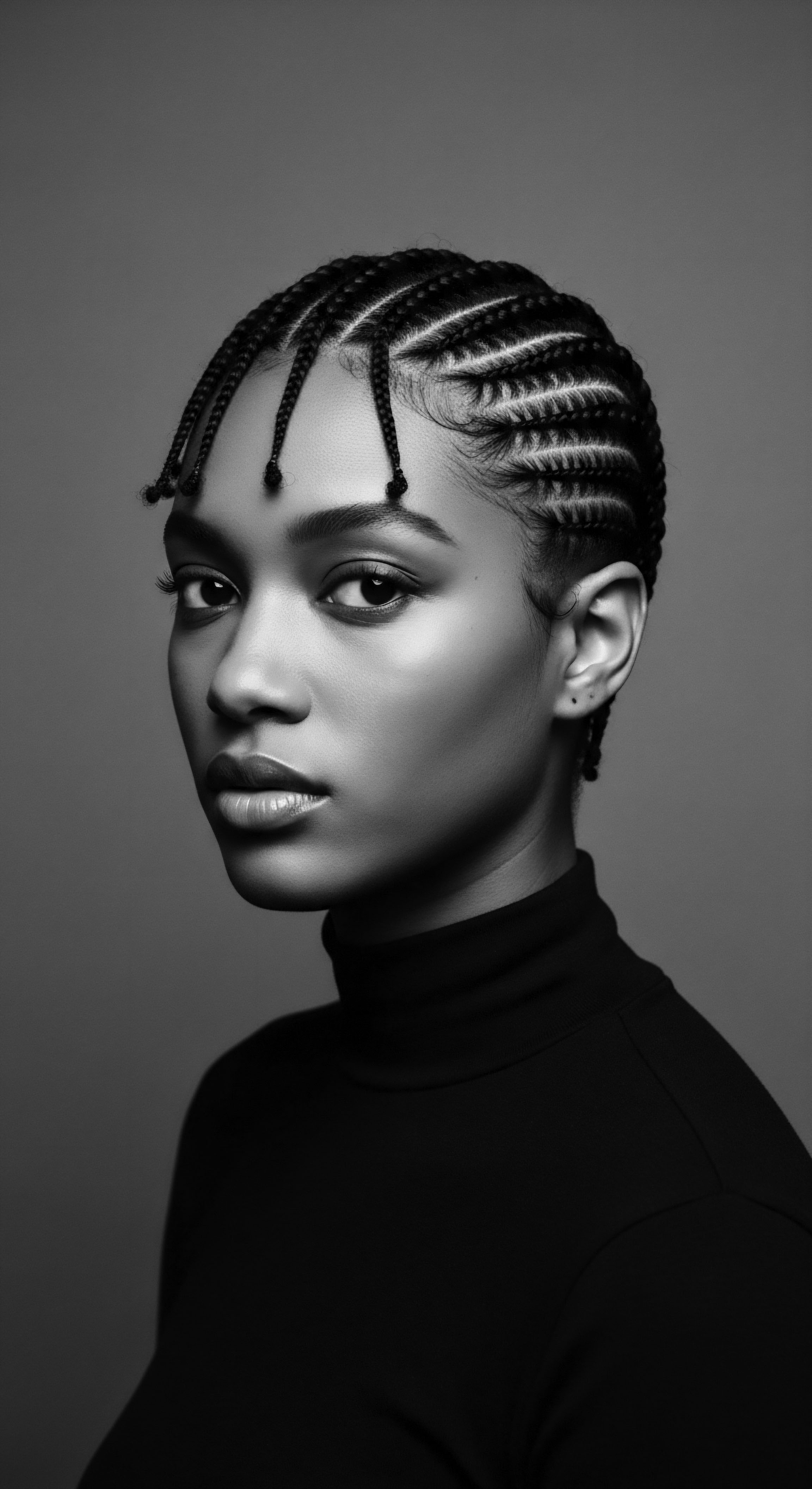
References
- Byrd, Ayana D. and Lori L. Tharps. Hair Story ❉ Untangling the Roots of Black Hair in America. St. Martin’s Publishing Group, 2014.
- Dabiri, Emma. Twisted ❉ The Tangled History of Black Hair Culture. HarperCollins, 2020.
- Davis-Sivasothy, Audrey. The Science of Black Hair ❉ A Comprehensive Guide to Textured Hair Care. Saja Publishing Company, 2011.
- Feughelman, Max. Mechanical Properties of Hair. CRC Press, 2002.
- Khumalo, Ncoza D. et al. “African hair morphology ❉ an electron microscopic and immunolabeling study.” Journal of Investigative Dermatology, vol. 115, no. 5, 2000, pp. 805-810.
- Onalapo, Damilare D. et al. “Traditional African Hair Care Practices ❉ A Review.” Journal of Cosmetology & Trichology, vol. 6, no. 1, 2020.
- Robbins, Clarence R. Chemical and Physical Behavior of Human Hair. 5th ed. Springer, 2012.
- Swift, J. A. and T. A. Smith. “The molecular structure of the hair cuticle.” Journal of Cosmetic Science, vol. 52, no. 1, 2001, pp. 27-41.
- Velasco, M. V. R. et al. “Hair cosmetics ❉ an overview.” Brazilian Journal of Pharmaceutical Sciences, vol. 45, no. 3, 2009, pp. 477-488.
- Yang, Fei-Chi, Yuchen Zhang, and Maikel C. Rheinstädter. “The structure of people’s hair.” PeerJ, vol. 2, 2014, e619.
